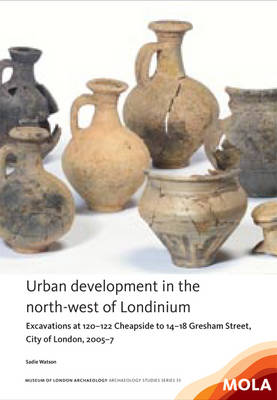Two adjacent excavations in the City of London revealed new information about Roman and later development of an area which lay within the west part of the Roman town, directly north of the main east-west road (beneath modern Cheapside). The earliest Roman buildings may pre-date the Boudican fire of AD 60/61, although most date to the Flavian period, and were ranged along the street to the south. In the north of the study area, stone foundations may represent larger domestic properties located near the amphitheatre. A subsidiary road built here consolidated the local infrastructure and a large town house north of this road may have links to the fort to the north-west. A major fire, possibly the Hadrianic fire of AD 120-5, destroyed many buildings and the road fell into decline. There is no evidence of Roman habitation beyond the mid 2nd century AD.
Reoccupation in the 10th century AD is indicated by pitting, while the stone foundations of timber buildings reflect the city's development during the mid 11th to mid 12th century. The economic growth of London in the later medieval period is represented by the cellars of two wealthy merchants'houses. Post-medieval archaeological remains were fragmentary, but documentary research revealed a possible link to one inhabitant, an apothecary called John Scarborough.
- ISBN10 190758627X
- ISBN13 9781907586279
- Publish Date 12 March 2015
- Publish Status Active
- Publish Country GB
- Publisher Museum of London Archaeology
- Imprint Museum of London Archaeology Service
- Format Paperback
- Pages 140
- Language English
